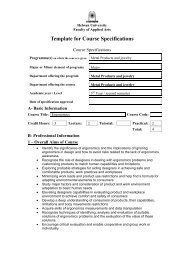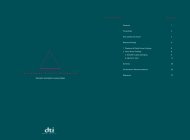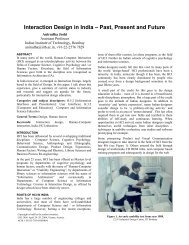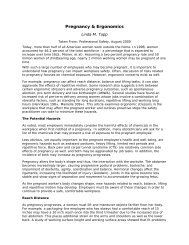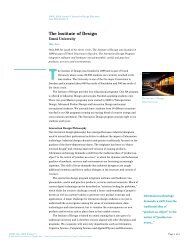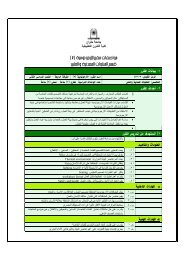Space Requirements for Wheeled Mobility - University at Buffalo ...
Space Requirements for Wheeled Mobility - University at Buffalo ...
Space Requirements for Wheeled Mobility - University at Buffalo ...
- No tags were found...
You also want an ePaper? Increase the reach of your titles
YUMPU automatically turns print PDFs into web optimized ePapers that Google loves.
more susceptible to tipping, and those with front-wheel drive off both a tightturning radius and stability, although are more difficult to control during straighttravel.• There is a gre<strong>at</strong> variety in power wheelchair configur<strong>at</strong>ions since the se<strong>at</strong>ingsystems of one manufacturer can be used with the frames of anothermanufacturer to customize the chair to the needs of the user.• Because pressures sores and pain are problems associ<strong>at</strong>ed with conventionalchair designs, chairs th<strong>at</strong> provide gre<strong>at</strong>er postural adjustability may bebeneficial to users but these chairs increase the variability of spacerequirements <strong>for</strong> different tasks.• Scooters and powered wheelchairs are going to become increasing similar asef<strong>for</strong>ts are made to make powered wheelchairs more transportable andmodular.• Even the most advanced wheeled mobility systems have important limit<strong>at</strong>ionswith respect to their use in the built environment. For example, theIndependence 3000 IBOT Transporter uses a variety of electronic sensors toadjust maneuverability, stability and function to the terrain, but currently has ase<strong>at</strong> surface too high to be used easily <strong>at</strong> work surfaces <strong>at</strong> conventionalheights.• Given th<strong>at</strong> the number of individuals in nursing homes is expected to double inthe next 30 years, the use of wheeled mobility technologies th<strong>at</strong> improvefunction of older people in these environments is an important priority.• Market trends suggest th<strong>at</strong> the space requirements <strong>for</strong> wheeled mobility willincrease. For example, the market <strong>for</strong> both manual and powered bari<strong>at</strong>ricchairs is expected to grow the most rapidly of all chair c<strong>at</strong>egories, and markets<strong>for</strong> “PAPAW” chairs and specialized se<strong>at</strong>ing in chairs, although now small, isexpected to also grow rapidly.• Labor<strong>at</strong>ory-based d<strong>at</strong>a collection on function as per<strong>for</strong>med in conventionalanthropometric studies may not reflect function in actual commercial, public orresidential environments. There<strong>for</strong>e, other types of studies designed toevalu<strong>at</strong>e the space requirements of wheeled mobility devices are needed.• Further research should focus on reducing risks to secondary conditionsassoci<strong>at</strong>ed with wheeled mobility device use, determining utiliz<strong>at</strong>ion r<strong>at</strong>es ofwheelchairs in different settings, and new mobility aid technologies toaccommod<strong>at</strong>e a gre<strong>at</strong>er range of individuals who need assistance such as theelderly, people who are obese and those who have multiple sclerosis.Research focused on improving safety during a wide range of functionalactivities is also needed.<strong>Space</strong> <strong>Requirements</strong> <strong>for</strong> <strong>Wheeled</strong> <strong>Mobility</strong> 24



